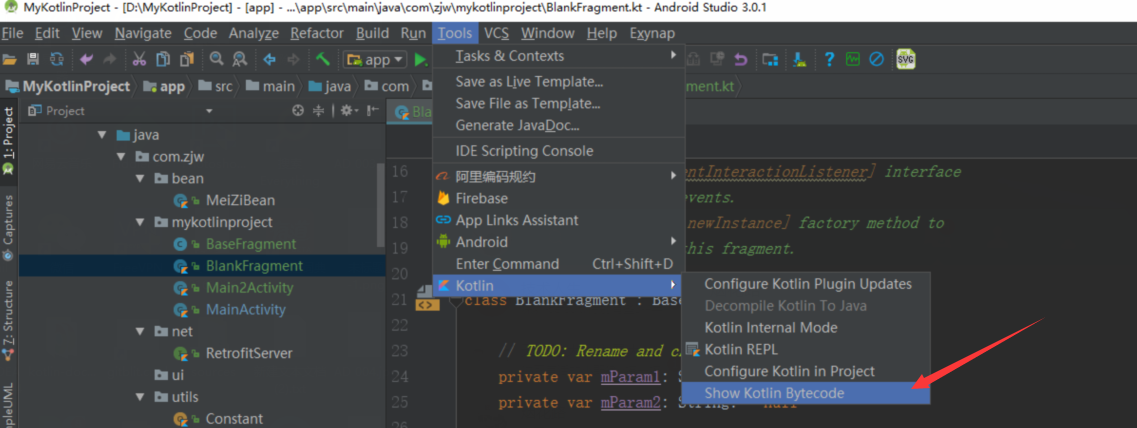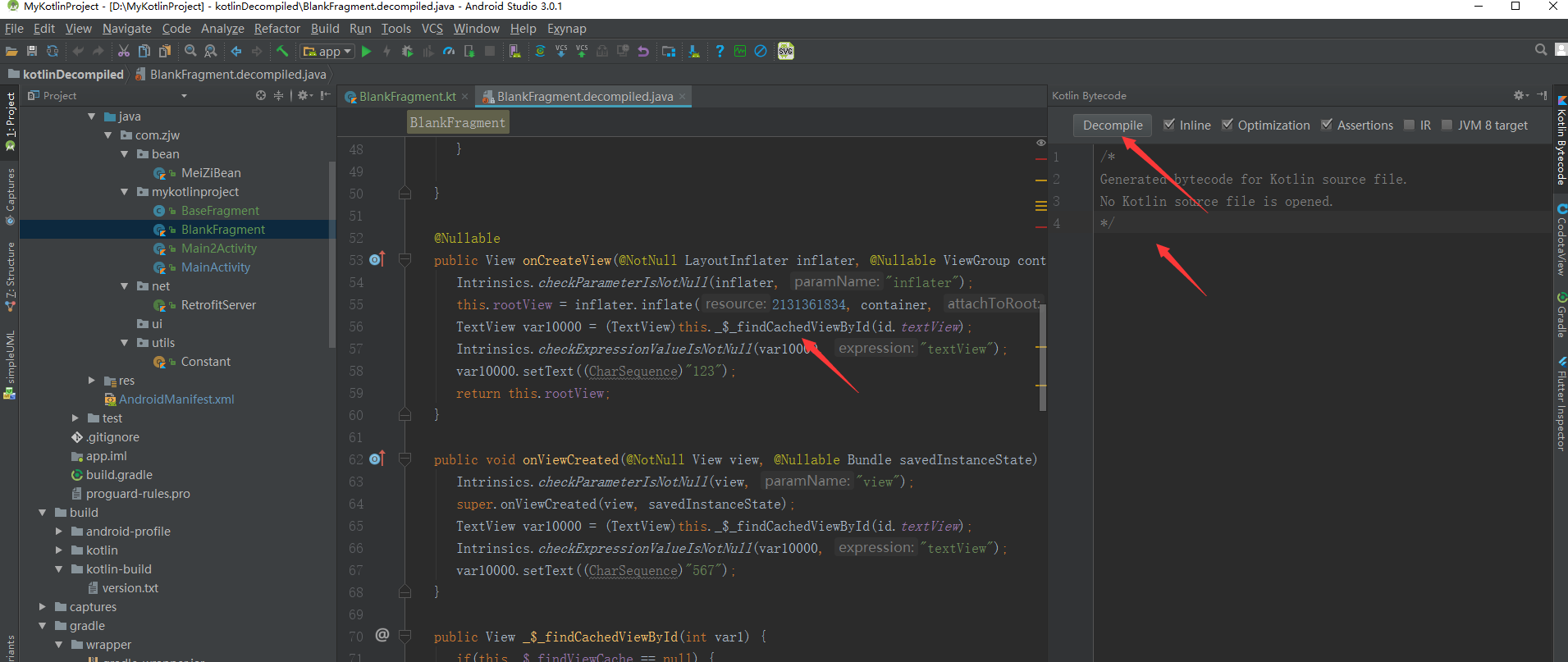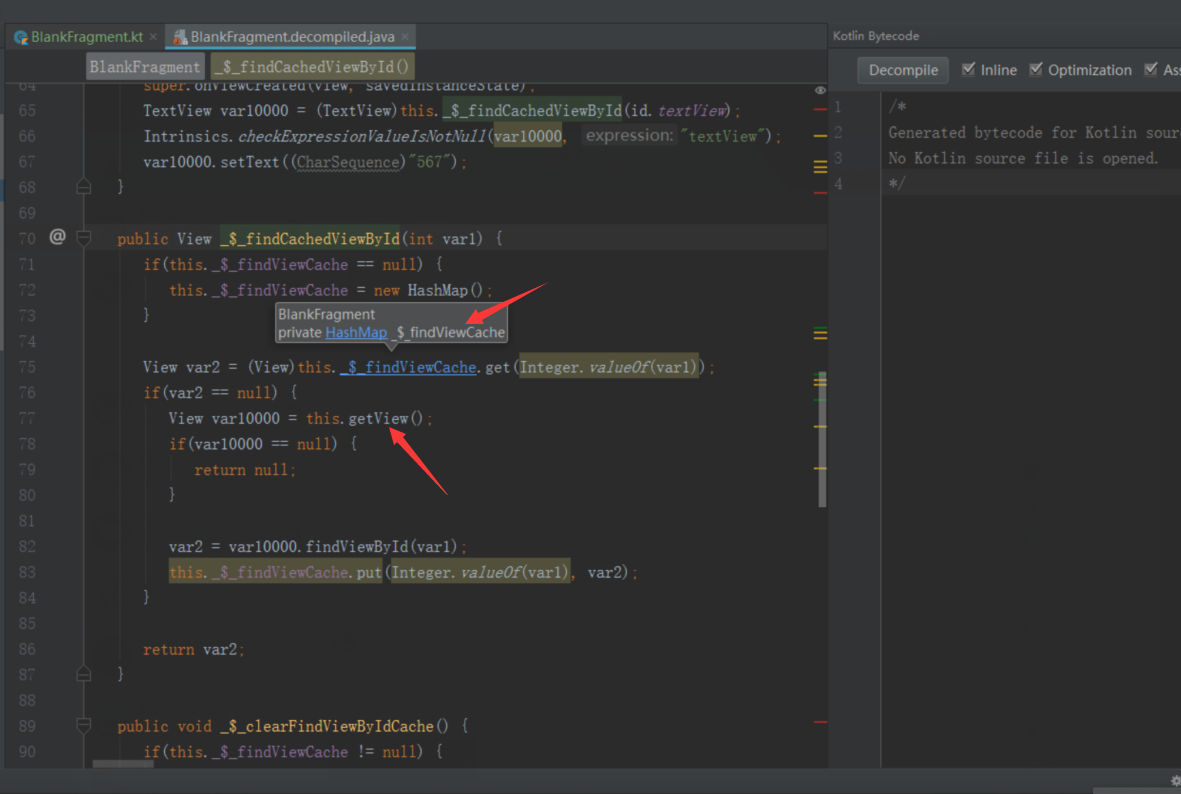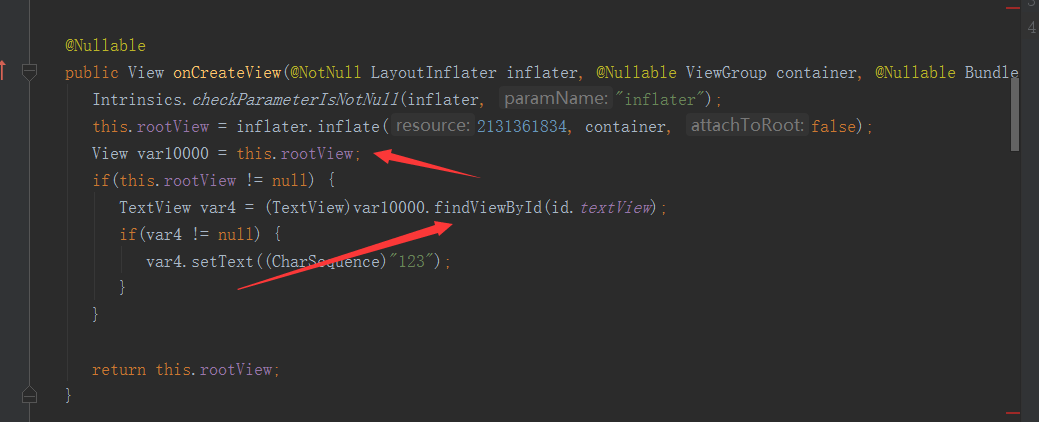1.一次crash的产生最近项目开始转kotlin其中用了官方推荐的kotlin-android-extensions,这次通过一次crash看kotlin-android-extensions免去findviewbyId的原理
引入kotlin-android-extensions这里不多做解释了,下面是一次fragment中不当使用kotlin-android-extensions导致crash的代码
override fun onCreateView(
inflater: LayoutInflater, container: ViewGroup?,
savedInstanceState: Bundle?
): View? {
// Inflate the layout for this fragment
rootView = inflater.inflate(R.layout.fragment_blank, container, false)
//import kotlinx.android.synthetic.main.fragment_blank.*
textView.text = "123" //其中textView 是fragment_blank.xml中的一个TextView控件的id
return rootView
}此时会存在以下错误
Caused by: android.view.InflateException: Binary XML file line #0: Binary XML file line #0: Error inflating class fragment
Caused by: android.view.InflateException: Binary XML file line #0: Error inflating class fragment
Caused by: java.lang.IllegalStateException: textView must not be null
at com.zjw.mykotlinproject.BlankFragment.onCreateView(BlankFragment.kt:45)
at android.support.v4.app.Fragment.performCreateView(Fragment.java:2261)好这个时候就有人说了fragment应该使用如下代码,可以解决这个异常
override fun onCreateView(
inflater: LayoutInflater, container: ViewGroup?,
savedInstanceState: Bundle?
): View? {
// Inflate the layout for this fragment
rootView = inflater.inflate(R.layout.fragment_blank, container, false)
import kotlinx.android.synthetic.main.fragment_blank.view.*
// rootView?.textView?.text = "123"
return rootView
}可以解决,但是这一种方式是一次回避查看源码的机会,因为以上2种方式的原理是不一样的,那么怎么分析上述的异常呢,因为代码被kotlin-android-extensions动了手脚,因此直接看是看不懂的,什么你要看kotlin-android-extensions源码?你自己找找吧,反正我在本地找到的source.jar是空的,网上github上也没找到,就算找到也要花时间分析,我只想知道我现在的这个fragment到底被kotlin-android-extensions改成了什么样子而已,emmmm~嘤嘤嘤~,怎么办呢?以下将给出办法
第一步
第二步
按了 Decompile 按钮之后
咦,onCreateView方法里面多了一个_$_findCachedViewById方法,在当前文件搜索这个方法可以看见实现如下图
到这里就清楚了,kotlin-android-extensions让你直接用id就能得到xml中的控件对象并且使用,其实是他生成了findviewbyId的代码我们开发者就方便了,这里注意到这句this.getView()这里才是产生crash的真正原因,因为`this.getView()调用时候onCreateView还没有返回,因此最后findViewById的时候就产生了问题。要避免crash的话同时不想用 rootView?.textView``这一长串代码的话就这样干
override fun onViewCreated(view: View, savedInstanceState: Bundle?) {
super.onViewCreated(view, savedInstanceState)
textView.text = "123"
// Log.e(TAG,TAG)
}好接着说 为什么下面代码使用正常
override fun onCreateView(
inflater: LayoutInflater, container: ViewGroup?,
savedInstanceState: Bundle?
): View? {
// Inflate the layout for this fragment
rootView = inflater.inflate(R.layout.fragment_blank, container, false)
//import kotlinx.android.synthetic.main.fragment_blank.*
//textView.text = "123"
// import kotlinx.android.synthetic.main.fragment_blank.view.*
rootView?.textView?.text = "123"
return rootView
}来继续反编译操作!看看真相
简单吧
// import kotlinx.android.synthetic.main.fragment_blank.view.*
rootView?.textView?.text = "123"上述代码做的事情就是使用了rootView然后用rootView.findViewById 所以我上文才说这一种方式是一次回避查看源码的机会
通过反编译手段我们除了可以看见第三方插件对源码的改动以外,还能定位到java和kotlin之间如何相互翻译语义的,有的时候语义翻译不对会导致crash(具体例子有兴趣就加我和我讨论吧),当出现神奇的Bug的时候建议你往这方面想想
共同学习,写下你的评论
评论加载中...
作者其他优质文章










